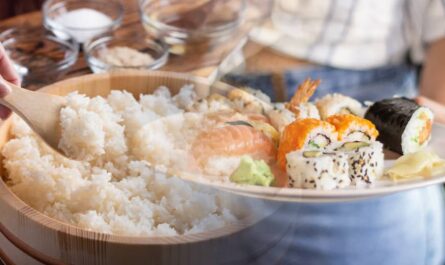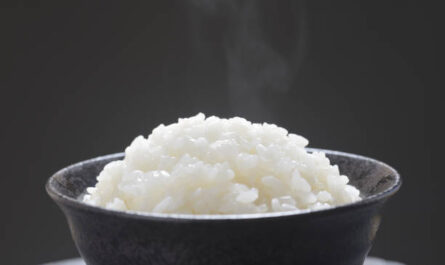Welcome to the world of sushi! If you’re a beginner eager to explore the intricacies of making sushi rice, you’ve come to the right place. Sushi rice for beginners is an exciting journey that combines art and science to create the perfect foundation for delicious sushi. In this guide, we’ll walk you through everything you need to know to get started with making sushi rice at home.

What is Sushi Rice?
Before diving into the process, it’s important to understand what sushi rice is. Sushi rice, also known as shari or sushi-meshi, is a type of rice specifically prepared for sushi. It is seasoned with a mixture of vinegar, sugar, and salt, giving it a unique taste and sticky texture that binds sushi rolls together. The right rice is crucial for achieving authentic sushi.
Choosing the Right Rice
The first step in making sushi rice is selecting the right type of rice. Short-grain rice is the preferred choice due to its high starch content, which provides the necessary stickiness. Visit our guide on choosing sushi rice for more information.
Short-Grain vs. Medium-Grain Rice
While short-grain rice is the traditional choice, some recipes may use medium-grain rice. However, the texture and stickiness will differ. For an in-depth comparison, check out sushi rice vs medium-grain.
Where to Buy Sushi Rice
You can find sushi rice in most grocery stores, Asian markets, or online. Look for brands specifically labeled as sushi rice to ensure the best results.
Preparing Sushi Rice
Once you have the right rice, it’s time to prepare it. Follow these steps for perfect sushi rice:
Rinsing the Rice
Rinsing the rice removes excess starch, preventing it from becoming too sticky. Rinse the rice in cold water until the water runs clear.
Cooking the Rice
Use a rice cooker or a pot to cook the rice. Follow the instructions on the rice package for the correct water-to-rice ratio. For a detailed guide, visit sushi rice thermometer use.
Seasoning the Rice
After cooking, transfer the rice to a large bowl and let it cool slightly. Prepare a seasoning mixture of rice vinegar, sugar, and salt. Evenly pour it over the rice and gently mix with a wooden paddle or spatula.
Tips for Perfect Sushi Rice
Mastering sushi rice requires attention to detail. Here are some tips to help you:
Use the Right Tools
Invest in a good quality rice cooker and a wooden rice paddle for the best results.
Be Patient
Allow the rice to cool to room temperature before using it to make sushi rolls.
Practice Consistency
Consistency is key when preparing sushi rice. Measure ingredients accurately and follow the same process each time. For more tips, visit 5 tips for perfect sushi rice.
Common Mistakes to Avoid
Even experienced cooks can make mistakes when preparing sushi rice. Here are some common pitfalls to avoid:
Overcooking the Rice
Overcooked rice can become mushy and lose its texture. Keep an eye on your rice while it cooks.
Using the Wrong Rice
Using long-grain rice instead of short-grain can result in a less sticky texture. Learn more about rice types from this rice guide.
Skipping the Rinsing Step
Rinsing is crucial to remove excess starch. Skipping this step can lead to overly sticky rice.
Storing Sushi Rice
If you have leftover sushi rice, store it properly to maintain its quality. Place the rice in an airtight container and refrigerate for up to three days.
Reheating Sushi Rice
When reheating, use a microwave or steamer to gently warm the rice. Add a little water if needed to restore moisture.
Conclusion
With this guide, you’re now equipped to make sushi rice like a pro. Remember, practice makes perfect, and each attempt will bring you closer to sushi-making mastery. Enjoy the process, and soon you’ll be creating delicious sushi at home with confidence.

FAQs
What is the best rice for sushi?
Short-grain rice is the best choice for sushi due to its high starch content, which provides the necessary stickiness.
Can I use regular vinegar instead of rice vinegar?
Rice vinegar is recommended for its mild flavor, but in a pinch, you can use a diluted mixture of white vinegar and sugar.
Why is my sushi rice too sticky?
If your sushi rice is too sticky, it may be due to overcooking or not rinsing the rice properly before cooking.
This article contains affiliate links. We may earn a commission at no extra cost to you.




